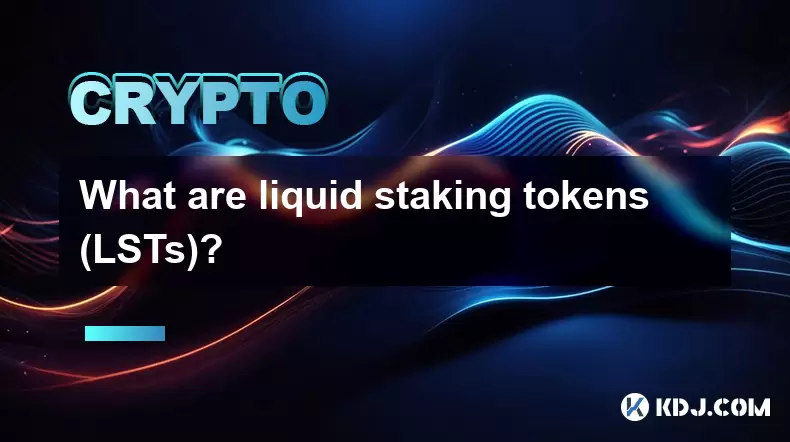-
 Bitcoin
Bitcoin $118100
-0.44% -
 Ethereum
Ethereum $3585
5.43% -
 XRP
XRP $3.434
5.65% -
 Tether USDt
Tether USDt $1.000
0.02% -
 BNB
BNB $743.8
3.89% -
 Solana
Solana $178.7
3.84% -
 USDC
USDC $1.000
0.03% -
 Dogecoin
Dogecoin $0.2381
12.81% -
 TRON
TRON $0.3270
3.62% -
 Cardano
Cardano $0.8315
4.93% -
 Hyperliquid
Hyperliquid $44.51
-4.42% -
 Stellar
Stellar $0.4710
1.52% -
 Sui
Sui $3.896
-2.51% -
 Chainlink
Chainlink $18.09
6.98% -
 Hedera
Hedera $0.2681
9.31% -
 Bitcoin Cash
Bitcoin Cash $516.7
4.83% -
 Avalanche
Avalanche $23.95
6.96% -
 Shiba Inu
Shiba Inu $0.00001490
5.67% -
 UNUS SED LEO
UNUS SED LEO $8.966
0.80% -
 Toncoin
Toncoin $3.294
4.39% -
 Litecoin
Litecoin $105.4
4.69% -
 Polkadot
Polkadot $4.356
5.30% -
 Uniswap
Uniswap $10.29
17.25% -
 Monero
Monero $327.9
-3.04% -
 Bitget Token
Bitget Token $4.942
4.33% -
 Ethena USDe
Ethena USDe $1.001
0.08% -
 Pepe
Pepe $0.00001348
2.17% -
 Dai
Dai $1.000
0.02% -
 Aave
Aave $320.8
0.58% -
 Bittensor
Bittensor $411.8
-4.07%
What happens if a liquid staking protocol is hacked?
A liquid staking protocol hack can lead to loss of funds, devaluation of staking tokens, and weakened network security, highlighting the importance of audits, diversification, and risk management.
Jul 19, 2025 at 03:35 am

Understanding Liquid Staking Protocols
Liquid staking protocols allow users to stake their cryptocurrencies, such as Ethereum (ETH), while receiving a tokenized representation of their staked assets. These tokens, like stETH or rETH, can be used in DeFi applications, enabling liquidity and yield generation without locking up the original assets. However, the interconnected nature of these systems exposes them to various security risks, especially if the protocol itself is compromised.
What Happens During a Hack?
If a liquid staking protocol is hacked, the immediate consequence is the potential loss of user funds. The smart contracts that govern these protocols are often the primary targets for attackers. Exploits like reentrancy attacks, flash loan attacks, or private key leaks can lead to massive fund withdrawals. When a protocol is compromised, the peg between the tokenized asset and the underlying asset may also break, causing devaluation of the liquid staking token.
Impact on Staked Assets and Network Security
In a worst-case scenario, a successful hack can compromise validator keys, leading to slashing penalties from the underlying blockchain network. For instance, in Ethereum's proof-of-stake system, validators who misbehave face loss of staked ETH. If the liquid staking provider operates a large number of validators, a breach could weaken network security, especially if a significant portion of the total staked ETH is affected.
Token Devaluation and Market Reactions
Once a liquid staking protocol is hacked, the tokenized staking asset often experiences a sharp drop in value. Users who hold stETH, rETH, or similar tokens might see their holdings lose value rapidly due to loss of confidence or actual loss of collateral. This can trigger widespread panic selling, especially in decentralized exchanges (DEXs) where liquidity pools are affected. The depegging of these assets can cause ripple effects across DeFi platforms that rely on them as collateral or liquidity.
Recovery Mechanisms and Insurance Coverage
Some liquid staking protocols implement risk mitigation strategies, such as insurance funds, decentralized governance responses, or third-party audits. In the event of a hack, governance may vote to pause withdrawals, initiate recovery procedures, or distribute insurance payouts. However, the success of recovery depends heavily on the protocol's design, reserve mechanisms, and the speed of response from the development team and community.
Steps to Protect Yourself as a User
- Monitor protocol audits and ensure the liquid staking platform has undergone multiple third-party security assessments
- Avoid overexposure by not staking all your funds in a single liquid staking protocol
- Keep an eye on governance proposals and participate if possible to influence security decisions
- Use wallets with multi-signature or hardware support to secure your liquid staking tokens
- Consider diversifying across multiple protocols to minimize systemic risk
Frequently Asked Questions
Q: Can a liquid staking token become worthless after a hack?
A: Yes, if the underlying assets are stolen or severely devalued due to slashing or loss, the token can lose most or all of its value depending on the severity of the incident.
Q: Are liquid staking providers liable for losses during a hack?
A: Most liquid staking protocols operate without formal liability guarantees, meaning users typically bear the full risk of loss unless the protocol has explicit insurance mechanisms in place.
Q: How can I check if a liquid staking protocol has been hacked?
A: Monitor on-chain transactions, protocol announcements, and blockchain explorers for unusual withdrawals or governance changes. Also, follow official communication channels like Twitter, Discord, or forums for real-time updates.
Q: Can a hacked liquid staking protocol recover its peg?
A: Recovery is possible if the protocol has sufficient reserves, insurance, or community support to recapitalize lost assets, but it is not guaranteed and depends on market confidence and technical feasibility.
Disclaimer:info@kdj.com
The information provided is not trading advice. kdj.com does not assume any responsibility for any investments made based on the information provided in this article. Cryptocurrencies are highly volatile and it is highly recommended that you invest with caution after thorough research!
If you believe that the content used on this website infringes your copyright, please contact us immediately (info@kdj.com) and we will delete it promptly.
- Penny Altcoins Eyeing $1 in Q3 2025: Cardano, BlockchainFX, and the Hunt for Crypto Gold
- 2025-07-19 05:10:13
- Trump, Stablecoins, and New Laws: A Crypto Revolution?
- 2025-07-19 05:10:13
- Princess Anne's 75th Birthday: A Royal First and a Celebration of Duty
- 2025-07-19 04:50:13
- Flare Crypto: Powering the Decentralized Future with a Robust Data Backbone
- 2025-07-19 04:55:13
- Bitcoin's Record Highs: Navigating Risk Assets in the Crypto Craze
- 2025-07-19 05:00:13
- Passive Income Revolution: Crypto Cloud Mining in 2025
- 2025-07-19 05:05:13
Related knowledge

What is the future of liquid staking?
Jul 19,2025 at 02:49am
Understanding the Concept of Liquid StakingLiquid staking refers to a mechanism that allows users to stake their cryptocurrencies while still retainin...

What happens if a liquid staking protocol is hacked?
Jul 19,2025 at 03:35am
Understanding Liquid Staking ProtocolsLiquid staking protocols allow users to stake their cryptocurrencies, such as Ethereum (ETH), while receiving a ...

What is jitoSOL?
Jul 18,2025 at 09:36pm
Understanding the Basics of jitoSOLjitoSOL is a liquid staking token that represents a user’s stake in the Solana blockchain through the Jito Network....

What are liquid staking tokens (LSTs)?
Jul 18,2025 at 04:50pm
What are Liquid Staking Tokens (LSTs)?Liquid Staking Tokens (LSTs) are digital assets that represent a user's stake in a proof-of-stake (PoS) blockcha...

Best liquid staking platforms for Ethereum
Jul 18,2025 at 02:35pm
What Is Liquid Staking?Liquid staking is a mechanism that allows users to stake their cryptocurrency assets, particularly Ethereum (ETH), while still ...

What are the investment prospects of Stargate Finance (STG) coin?
Dec 01,2024 at 09:45pm
What are the investment prospects of Stargate Finance (STG) coin?Stargate Finance is a decentralized liquidity transfer protocol that allows users to ...

What is the future of liquid staking?
Jul 19,2025 at 02:49am
Understanding the Concept of Liquid StakingLiquid staking refers to a mechanism that allows users to stake their cryptocurrencies while still retainin...

What happens if a liquid staking protocol is hacked?
Jul 19,2025 at 03:35am
Understanding Liquid Staking ProtocolsLiquid staking protocols allow users to stake their cryptocurrencies, such as Ethereum (ETH), while receiving a ...

What is jitoSOL?
Jul 18,2025 at 09:36pm
Understanding the Basics of jitoSOLjitoSOL is a liquid staking token that represents a user’s stake in the Solana blockchain through the Jito Network....

What are liquid staking tokens (LSTs)?
Jul 18,2025 at 04:50pm
What are Liquid Staking Tokens (LSTs)?Liquid Staking Tokens (LSTs) are digital assets that represent a user's stake in a proof-of-stake (PoS) blockcha...

Best liquid staking platforms for Ethereum
Jul 18,2025 at 02:35pm
What Is Liquid Staking?Liquid staking is a mechanism that allows users to stake their cryptocurrency assets, particularly Ethereum (ETH), while still ...

What are the investment prospects of Stargate Finance (STG) coin?
Dec 01,2024 at 09:45pm
What are the investment prospects of Stargate Finance (STG) coin?Stargate Finance is a decentralized liquidity transfer protocol that allows users to ...
See all articles

























































































